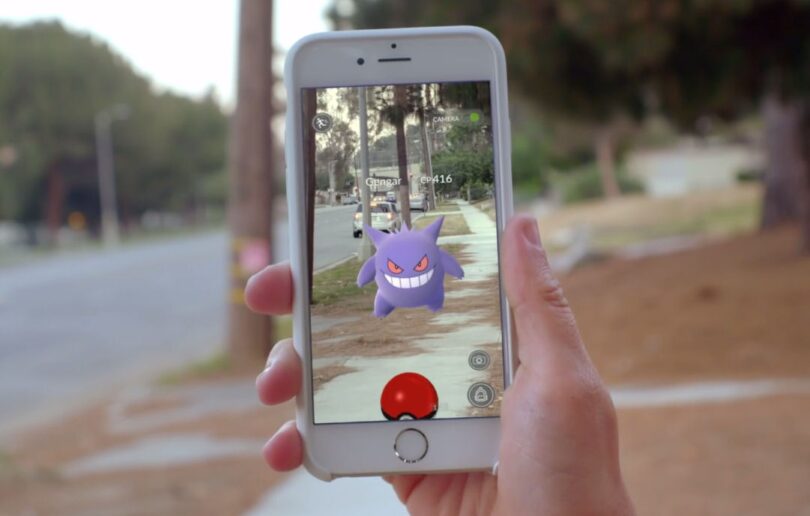How Pokémon Go Transformed Mobile Gaming Forever?
In July 2016, a simple mobile game called Pokémon Go took the world by storm. Developed by Niantic in collaboration with Nintendo and The Pokémon Company, it wasn’t just another mobile game—it was a cultural phenomenon. With millions of downloads within weeks of its release, Pokémon Go redefined how people experienced gaming, blurring the boundaries between the virtual and the real world.
The game’s success was not only about nostalgia for the beloved Pokémon franchise but also about its innovative use of augmented reality (AR) and location-based technology. This fusion of digital characters with real-world environments created a brand-new style of mobile gameplay. To this day, the influence of Pokémon Go can be seen in mobile games, fitness apps, and even urban planning.
In this article, we’ll dive deep into how Pokémon Go transformed mobile gaming forever—covering its history, unique gameplay mechanics, cultural impact, economic success, challenges, and lasting legacy.
The Birth of Pokémon Go
Niantic’s Vision
Pokémon Go was born out of Niantic’s earlier experiment, Ingress, a location-based game that used real-world landmarks as part of gameplay. Niantic’s CEO, John Hanke, saw the potential for blending AR with beloved intellectual property. The Pokémon franchise, with its global fan base, was the perfect partner.
Collaboration with Nintendo and The Pokémon Company
Nintendo and The Pokémon Company wanted to expand Pokémon beyond traditional consoles. By combining Niantic’s AR expertise with the Pokémon brand, they created something groundbreaking—a mobile game that allowed players to “catch” Pokémon in their real surroundings.
Gameplay Mechanics: A Revolutionary Step
Augmented Reality at the Core
Unlike traditional games confined to screens, Pokémon Go allowed players to see Pokémon superimposed onto real-world environments using their phone’s camera. This immersive AR experience made people feel as though Pokémon truly existed around them.
Location-Based Gaming
Pokémon Go required players to physically move to different locations to find Pokémon, PokéStops, and Gyms. Suddenly, the act of gaming wasn’t sedentary—it was active. Players had to walk, explore, and travel to progress.
Social and Collaborative Play
The game encouraged collaboration and competition. Players joined teams (Mystic, Valor, or Instinct) and worked together in Gym battles or participated in community events. This social dimension was unlike anything seen in mobile gaming before.
The Viral Success of Pokémon Go
Breaking Records
Within the first month, Pokémon Go had been downloaded more than 100 million times. It topped app charts in nearly every country it launched in, becoming the most downloaded app of 2016.
Nostalgia Meets Innovation
For older fans, Pokémon Go was a chance to relive childhood memories of catching Pokémon on handheld consoles. For younger generations, it was their first real Pokémon experience. This cross-generational appeal fueled its explosive popularity.
Media Frenzy
News outlets worldwide reported on the craze—showing players swarming parks, malls, and landmarks to catch rare Pokémon. It was one of the few games that entered mainstream conversation on such a massive scale.
Cultural Impact: More Than Just a Game
Encouraging Physical Activity
Pokémon Go inadvertently became a fitness tool. Players walked kilometers to hatch eggs or to reach PokéStops. Studies showed an increase in daily step counts for many players, with some walking miles more than usual.
Redefining Social Interaction
Unlike traditional gaming, which is often solitary, Pokémon Go brought people together in public spaces. Strangers became friends while chasing Pokémon, creating a sense of community rarely seen in gaming.
Tourism and Local Business Boost
Businesses quickly caught on. Cafes, restaurants, and shops near PokéStops advertised special deals for Pokémon trainers. Cities also saw boosts in tourism as players traveled to explore new areas with rare Pokémon spawns.
Public Safety and Awareness
Pokémon Go also raised discussions about public safety. Stories emerged of people trespassing, getting into accidents, or even discovering crimes while playing. Governments and organizations had to issue safety guidelines for players.
Read More: The Ultimate Guide to Pokémon Go Community Days
Economic Success and the Rise of AR Gaming
Revenue Explosion
Pokémon Go generated over $600 million in revenue in just three months, faster than any mobile game in history at the time. As of today, it has surpassed $6 billion in lifetime revenue, making it one of the most profitable mobile games ever.
Setting the Standard for AR
Before Pokémon Go, AR was a niche technology. The game proved its mainstream potential. Developers across industries—from gaming to retail—started exploring AR integration.
Expansion of the Pokémon Brand
The game revitalized the Pokémon franchise, boosting sales of Pokémon merchandise, trading cards, and even console games. It became a cross-platform ecosystem that strengthened the brand globally.
Challenges and Criticisms
Technical Glitches
During its peak, servers frequently crashed due to overwhelming demand. These issues frustrated many players and temporarily hindered its growth.
Privacy Concerns
Since Pokémon Go tracked players’ locations, concerns about data privacy emerged. Niantic had to clarify and improve its policies to maintain trust.
Declining Player Base
After the initial hype, casual players left the game. Pokémon Go had to continuously innovate with new features like raids, special events, and trading to keep the community engaged.
Evolution of Pokémon Go
Regular Updates and Events
Niantic kept the game alive with seasonal events, limited-time Pokémon, and community days. These kept players coming back, even years after launch.
Raids and Legendary Pokémon
The introduction of raid battles and legendary Pokémon added layers of strategy and cooperation. These updates solidified Pokémon Go as more than just a casual game.
Integration with Wearables
Niantic introduced devices like the Pokémon Go Plus, allowing players to interact with the game without always looking at their phones—making the experience more accessible.
Broader Influence on Mobile Gaming
A New Genre Emerges
Pokémon Go popularized the genre of location-based AR games. Titles like Harry Potter: Wizards Unite, Jurassic World Alive, and The Walking Dead: Our World followed its blueprint.
Fitness Apps Inspired by Gameplay
Apps like Zombies, Run! and other gamified fitness tools gained attention as people realized how fun it could be to mix gaming with exercise.
Tech Industry Adoption
Even beyond gaming, industries looked at Pokémon Go’s success as proof of AR’s potential. Retail stores tested AR shopping apps, and museums developed AR-guided tours.
The Social Psychology of Pokémon Go
Nostalgia as a Driving Force
Pokémon Go tapped into childhood nostalgia, creating a powerful emotional connection with players. This demonstrated how effective nostalgia marketing can be.
The Joy of Discovery
The game replicated the thrill of adventure and discovery. Each walk held the potential for finding something new, keeping players hooked.
Community Belonging
By joining teams and participating in events, players experienced a sense of belonging—a crucial psychological motivator in long-term engagement.
Pokémon Go During the Pandemic
Adapting to Global Lockdowns
When COVID-19 restricted outdoor activity, Pokémon Go adapted by allowing remote raids, increased spawns at home, and new mechanics to keep players engaged without leaving their houses.
Community Resilience
The game became a source of comfort and normalcy during uncertain times, reminding players of the outside world and connecting them with others virtually.
The Lasting Legacy of Pokémon Go
Redefining Mobile Gaming
Pokémon Go proved that mobile games could be more than simple distractions. They could reshape how people interact with technology, fitness, and society.
Paving the Way for AR Innovation
Its success inspired advancements in AR technology across multiple sectors, from education to healthcare. For instance, AR anatomy apps and AR training tools owe part of their acceptance to Pokémon Go’s popularity.
Longevity in Gaming
Unlike many viral games that fade quickly, Pokémon Go has remained relevant for nearly a decade. Its adaptability, strong community, and continued updates ensure its place in gaming history.
Conclusion
Pokémon Go Transformed Mobile Gaming wasn’t just a game—it was a revolution. By blending augmented reality, location-based mechanics, and social interaction, it forever changed how we view mobile gaming. It broke down barriers between virtual and real worlds, encouraged physical activity, built communities, and created an entirely new genre of games.
Though it faced challenges along the way, Pokémon Go’s influence continues to ripple across industries. Whether you’re a Pokémon trainer, a developer inspired by its success, or simply someone who remembers the summer of 2016 as the summer of Pokémon, one thing is certain: Pokémon Go transformed mobile gaming forever.







